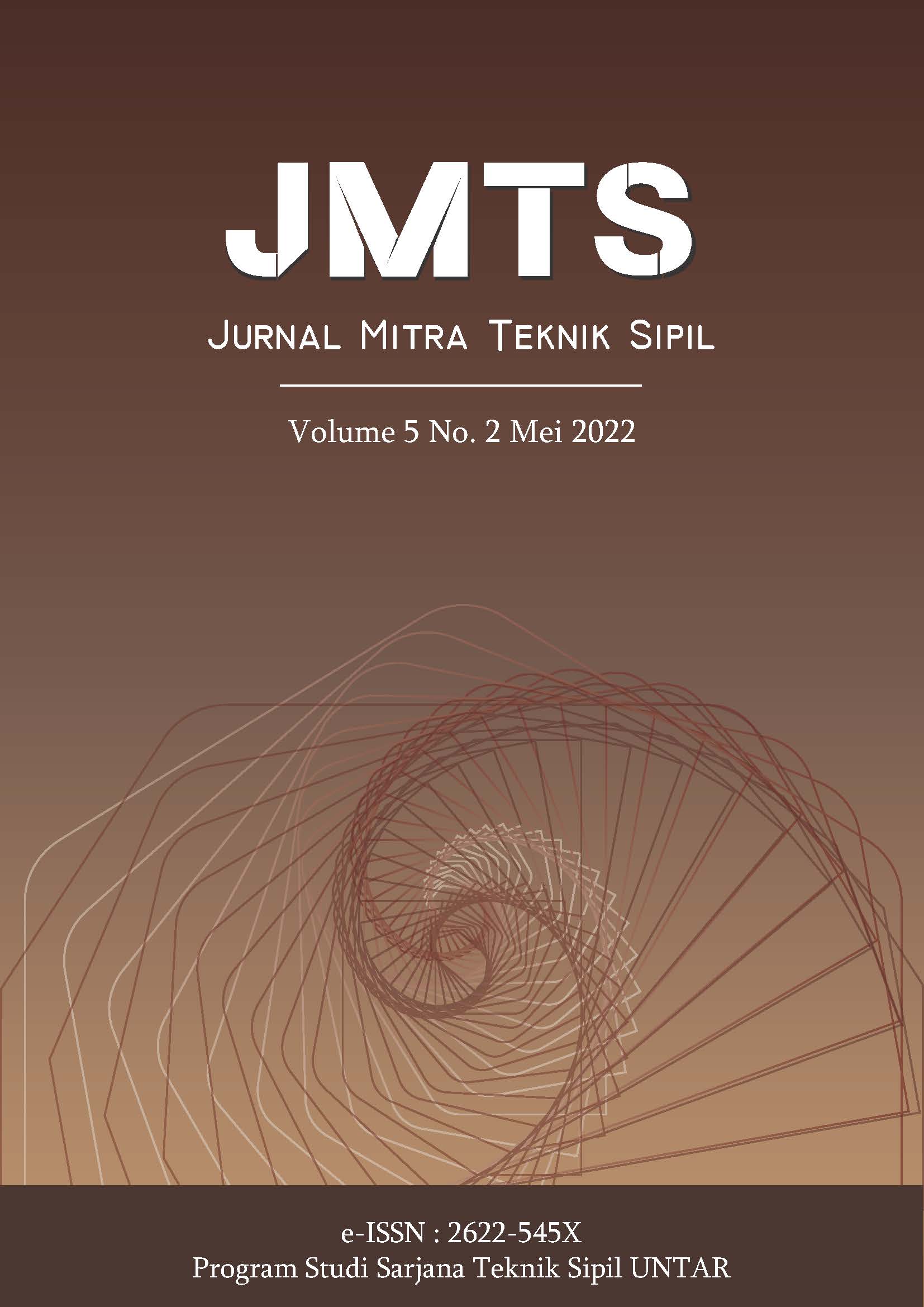ANALISIS FINITE ELEMENT DEFORMASI RIGID INCLUSION DENGAN DAN TANPA INCLUSION CAPS DI TIMBUNAN BATUBARA
Main Article Content
Abstract
Kebutuhan energi yang besar untuk bangsa ini membuat para pelaku usaha mencoba bisnis pertambangan. Kalimantan Utara dengan cadangan batubara yang cukup besar menjadi salah satu incaran dari para pengusaha. Dalam membangun usaha pertambangan perlu di dukung oleh infrastruktur yang sangat memadai. Banyak tantangan yang dihadapi saat membangun infrastruktur tersebut salah satunya adalah tanah lunak yang tersebar di Kalimantan Utara. Tanah lunak menjadi kendala infrastruktur yang tidak boleh dipandang sebelah mata karena deformasi yang diakibatkan tanah lunak dapat berakibat fatal bagi suatu struktur bangunan. Untuk mengatasi permasalahan tersebut banyak metode perbaikan tanah yang bisa digunakan salah satunya adalah rigid inclusion. Metode ini mengambil prinsip dasar yaitu transfer beban dengan disalurkan ke load transfer platform yang merupakan ciri khas dari metode ini. Penambahan inclusion caps juga merupakan salah satu opsi pemodelan dari metode ini dimana dapat meningkatkan effisiensi di rigid inclusion. Dengan metode ini waktu pengerjaan akan lebih cepat dan efisien serta membuat deformasi tanah yang terjadi tidak besar.
The large energy demand for this nation makes business people try the mining business. North Kalimantan, with its large coal reserves, is one of the targets of entrepreneurs. In building a mining business it is necessary to be supported by a very adequate infrastructure. Many challenges were faced when building the infrastructure, one of which was soft soil spread across North Kalimantan. Soft soil is an infrastructure constraint that should not be underestimated because the deformation caused by soft soil can be fatal to a building structure. To overcome these problems, there are many soil improvement methods that can be used, one of which is rigid inclusion. This method takes the basic principle of load transfer by being channeled to a load transfer platform which is the hallmark of this method. The addition of inclusion caps is also one of the modeling options of this method which can increase efficiency in rigid inclusion. With this method, the processing time will be faster and more efficient and the soil deformation that occurs is not large.
Article Details
Section
References
ASIRI. (2011). Recommendation for the Deisgn, Construction and Control of Rigid inclusion Ground Improvements. France: IREX.
Bohn, C. (2016). Serviceability and Safety in The Design of Rigid inclusions and Combined Pile-Raft Foundations. Paris: HAL.
Abdulnafaa, Muhamd D., et al. “Comparison of Results of Pre-Consolidation of Soft Soil Using Analytical and Finite Element Software.” IOP Conference Series: Materials Science and Engineering, vol. 737, no. 1, 2020, doi:10.1088/1757-899X/737/1/012098.
Badan Standardisasi Nasional. “Tata Cara Perencanaan Ketahanan Gempa Untuk Struktur Bangunan Gedung Dan Non Gedung.” Sni 1726:2019, no. 8, 2019, p. 254.
Erhunmwun, I. D., and U. B. Ikponmwosa. “Review on Finite Element Method.” Journal of Applied Sciences and Environmental Management, vol. 21, no. 5, 2017, p. 999, doi:10.4314/jasem.v21i5.30.
Wadino, Frando, et al. “Analisis Deformasi Dinding Basement Pada Salah Satu Proyek Di Sudirman Menggunakan Metode Back Analysis Dari Hasil Monitoring.” JMTS: Jurnal Mitra Teknik Sipil, vol. 1, no. 1, 2018, p. 251, doi:10.24912/jmts.v1i1.2264.

